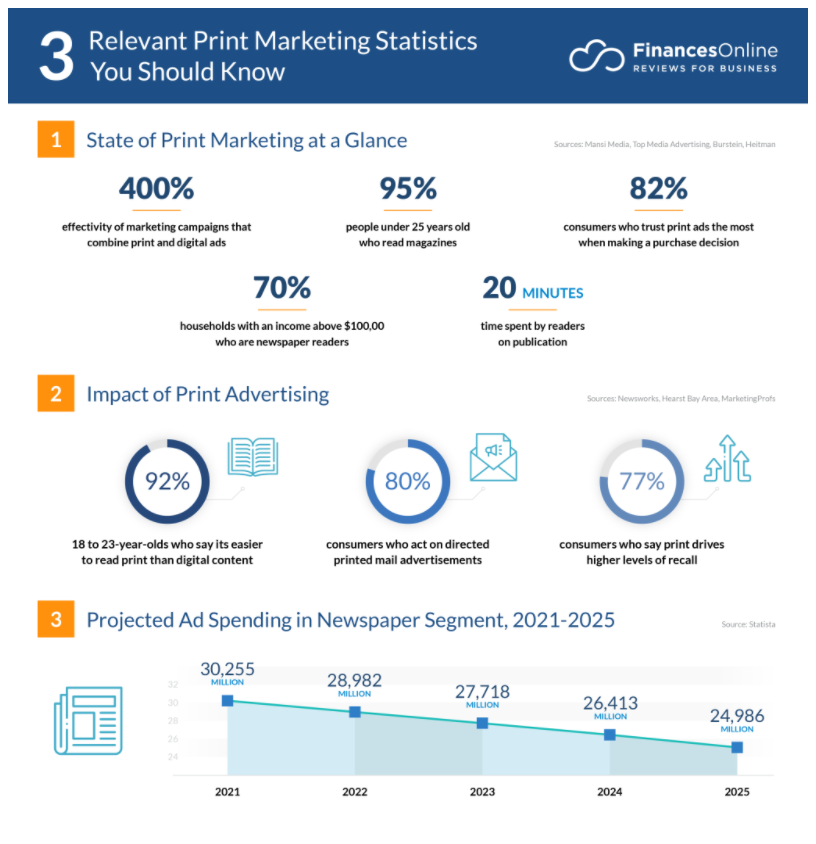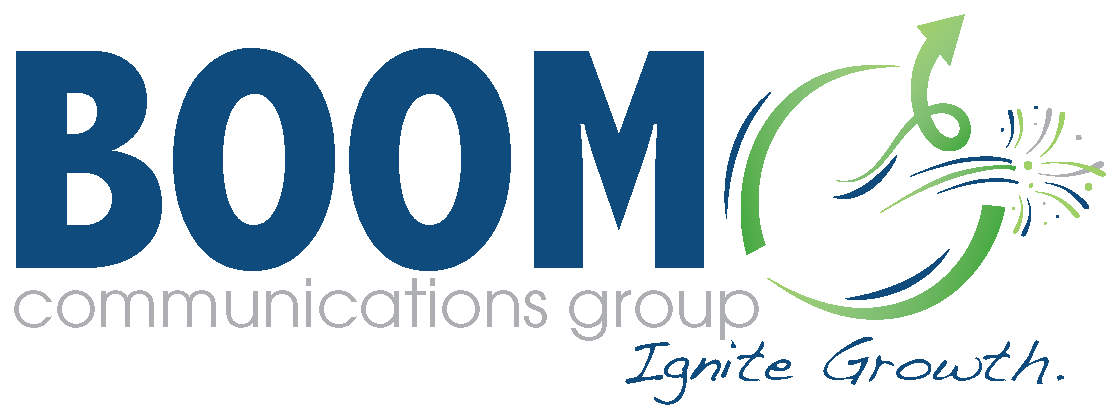
Whether you’re measuring digital or print ads, ensuring you have the proper tracking in place needs to be your first step before launching a new campaign. While platforms like Google Analytics make it much easier to measure digital performance, you can still track print ads using various techniques that give you insight into your return on investment (ROI) and the ability to forecast future results.
In this article, you’ll discover the unique ways publications can measure print ads and learn valuable insight into campaign performance. Publications need to track print ads to find the number of leads or sales each campaign produces and see data points into the lead’s customer journey after interacting with your ad.
Ready to learn more? Let’s dive in!
Key Takeaways
- Tracking your print ads is the only way to truly know the campaign’s ROI
- Utilize methods like UTM parameters and QR codes to maximize tracking
- Both your digital and traditional tactics often have similar tracking needs
7 Unique Ways to Track Print Ads Like a Professional
27% of consumers visit a brand’s website after viewing a print ad. With consumer engagement so high on printed media, it’s more important than ever to have the right tracking in place to measure final performance accurately.

While it’s a common misconception that tracking print ads is difficult, you can do it effectively by developing traceable call-to-actions and placing them throughout your creative. Here are a few super smart ways for you to get started:
1. Use a Different Phone Number
While many people have ditched phones for text or email, businesses still heavily rely on phone calls to manage relationships and close deals. Most likely, your publication uses the same phone number on each print ad. However, if you’re using the same phone number on each campaign, it makes it impossible to understand where your calls are coming from.
With modern tracking software, you can use a series of unique phone numbers to help you analyze call volume and correctly attribute them to the right campaign. For example, consider creating one phone number for your print ad campaign and another for your sales brochure. This allows you to easily track which marketing campaign is responsible for your volume influx.
2. Create Vanity URLs
If you use your standard web address on all print materials, you’ll most likely face unattributed leads and performance gaps. For example, if a prospect types your web address into the search engine after seeing your ad, Google will tag it as direct traffic instead of attributing it back to your print campaign.
Instead, utilize a vanity URL, a redirect domain for specific print campaigns. A quality vanity link is:
- Short
- Unique
- Easy to remember
Once you purchase the vanity URLs, redirect them to your standard website and track the redirects in Google Analytics. Make sure your URLs are personalized to the campaign and speak to the key message.

3. Develop Custom Landing Pages with UTM Parameters
With the average landing page resulting in a 2.35% conversion rate, it’s essential to develop custom content with Urchin Tracking Module (UTM) parameters that speaks to your prospect’s needs. UTM parameters are tracking codes within the URL that allow you to trace your website traffic back to a specific marketing campaign.
UTM parameters help you identify the lead’s initial:
- Campaign
- Medium
- Source
- Call-to-action
By designing a unique landing page and UTM parameter, you can give prospects a seamless customer journey while tracking their initial print ad experience. To make your landing page even more effective, include personalized copy and consistent branding to help the prospect remember why they were initially interested in your print ad.
4. Offer Custom Coupons or Discount Codes
If creating vanity URLs and UTM parameters is too complex for your audience, consider making custom discount codes for each print ad campaign. Once you highlight the coupon in your ad, you’re able to easily attribute it in Google Analytics and analyze your ROI from each campaign.
However, keep in mind that websites now offer “coupon sharing,” so you may have more coupon users who never saw your print ad but are still reaping the benefits of the discount. You can track this in Google Analytics by looking at the referral traffic source.
5. Write a Social Hashtag
Developing a catchy social hashtag is a great way to track print ad performance and online engagement if your brand is active on social media. Utilize the hashtag within the print ad copy or make it the center point of the whole campaign and encourage readers to tag you on social. You can leverage the hashtag as a contest entry, newsletter opt-in, or a free demo to collect the prospect’s contact information to incentivize engagement.
From a tracking perspective, monitor the hashtag usage on social media to gauge brand awareness from your print ad and attribute prospects correctly in your lead management software.
6. Embed a QR Code
From touchless menus to print ads, no other tracking mechanism experienced a comeback like QR code in the past few years. The best way to use a QR code to track your print ads is to directly lead prospects to a unique landing page with UTM parameters. With most smartphones scanning QR codes through the camera app, leads will have easy access to your website, and the UTM tracking parameters will allow you to attribute your print ad to the lead or sale.
7. Ask New Customers for Feedback
While your print campaign runs, arm your sales team with scripts to ask where the prospect heard about your company or if they’ve seen the print ad. While you won’t be able to track these responses quantitively, it will give you a better understanding of brand recognition, and you can request the sales team to note the reaction in the lead’s account information.
Optimize Your Print Ad Campaigns for Success
Accurately and effectively tracking your print ad campaigns isn’t an impossible task. With more technology focused on data, access to performance metrics for your print ads is an essential piece of your marketing strategy. In fact, you can use many of the solutions for your digital marketing campaigns, allowing you to analyze the effectiveness of all your channels.
Ready to maximize your print ad campaigns? Contact Boom Communications Group for more information.
